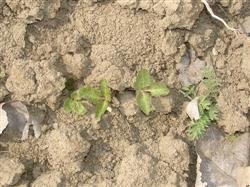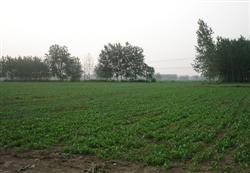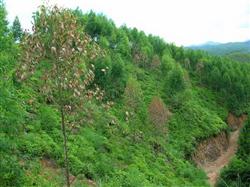How should Angelica dahurica be planted?

How should Angelica dahurica be planted? What should be paid attention to, please give guidance to Baizhi sex like warm and humid, sunny, afraid of high temperature, can withstand cold, strong adaptability. Angelica dahurica After the harvest of the previous crop, 2500 kilograms of rotten compost or barnyard manure, 100 kilograms of cake fertilizer and 50 kilograms of phosphate fertilizer can be used as base fertilizer per mu, and less fertilizer can be applied on fertile land. After application, ploughing should be carried out at a depth of more than 1 foot. After turning, the soil should be fully weathered, and then ploughed again. Because the root of Angelica dahurica grows deeply, so when preparing the soil, it is necessary to plough the fine rake deeply and make the fertility of the upper and lower soil layer uniform, so as to prevent more roots because the topsoil is too fat, which affects the yield and quality. After leveling and raking fine, make the border, the height of the border is 15ml 20cm, the width of the border is 1m, the surface of the border should be flat to facilitate irrigation and drainage, and the topsoil should be flat and fine to facilitate the emergence of seedlings. Angelica dahurica First, the sowing time production has strict requirements on the sowing date, and timely sowing is one of the important links to obtain high yield. If the seedlings are sown prematurely, the seedlings will grow too well before winter, and in the second year, some plants will bolt and blossom ahead of time, and the roots will become lignified or rotten, which can not be used as medicine, thus affecting the yield. If the temperature is too late, the temperature will drop, which will affect the germination and emergence of seedlings, and the seedlings are vulnerable to freezing injury, poor seedling growth and low yield. Due to the low germination rate of seeds in the next year and the high germination rate of fresh seeds, it is necessary to choose the fresh seeds harvested in the same year to sow, generally mainly in autumn, low yield and poor quality in spring sowing. The suitable sowing date varies with climate and soil fertility. Late sowing with high temperature, on the contrary, early sowing, suitable late sowing for fertile soil, and earlier sowing on the contrary. The suitable sowing time for autumn sowing is suitable for different places. Second, the sowing methods of strip sowing, hole sowing and spreading sowing can be used, and the most common sowing methods are strip sowing. Strip sowing method: row spacing is 25ml 30cm, shallow trench is opened (about 4mi 5min deep), seeds are evenly sowed into the ditch, covered with a thin layer of fine soil, generally, the seed consumption is 1ml / mu 1.5kg. Field management of Angelica dahurica 1. The seedlings of Angelica dahurica Strip sowing leaves one plant every 5 cm, hole sowing leaves 8 trees per hole, and the second seedling leaves one plant every 10 cm or 3 trees per hole. When the height of the seedlings is about 15 cm before and after the Qingming Festival, the distance between the plants is 15 cm or 3 plants are left in each hole, which are staggered in a triangle to facilitate ventilation and light transmission. When fixing the seedlings, the large seedlings with overgrown growth and bluish-white petioles should be pulled out to prevent early bolting and flowering. two。 Weeding in the middle tillage should be carried out at the same time with inter-seedling and fixed seedling. When the leaves grow up and the ridges on the border are closed, there is no need to weed. 3. Angelica dahurica The vegetative growth began to flourish after spring, but topdressing 3 Mel for 4 times. The first and second times were carried out after inter-seedling and intertillage, and the third and fourth times were carried out after seedling setting and before ridge closure. Fertilizer application should be carried out on a sunny day, and it is not suitable to apply fertilizer on the day after rain or weeding. Fertilizer types can choose human feces and urine, rotten cake fertilizer, ring fertilizer, urea and so on. When applying fertilizer for the first time, the fertilizer should be thin and less, such as 10 piculs of rare human and animal manure per mu, and then it can be thickened and increased gradually, such as 30 piculs and 40 piculs. One time before the ridge closure can be combined with the application of phosphorus and potassium fertilizer, such as calcium superphosphate 20ml 25kg, to make the root stout. It has been reported that 25 kg of calcium magnesium phosphate fertilizer and 5 kg of potassium chloride are applied in a topdressing before ridge sealing, and the soil is cultivated immediately after application, which can prevent lodging and promote growth. The number of times of topdressing and the amount of fertilizer applied each time can also be determined according to the growth of the plant. If the leaf color of the plant is not very exuberant when the ridge is about to be closed, you can topdressing again, or at this time the leaf color is thick green and the growth is exuberant, but no more topdressing. 4. Angelica dahurica After sowing, if the soil is dry, it should be watered immediately, and in the future, if there is no rain, it should be watered every few days to keep the border surface moist before the seedlings are unearthed, so as to facilitate seedling emergence; the soil should also be kept moist at the seedling stage to prevent the emergence of yellow leaves and produce more lateral roots. Seedlings should be watered thoroughly before overwintering. Henan has the experience of "wet freezing is best, but dry freezing is not easy to live". Hebei has the experience of "Angelica dahurica After the spring of the following year, it can be irrigated with topdressing, especially in summer days. If there is stagnant water in the field in the rainy season, ditches should be opened in time to prevent stagnant water from rotting roots and diseases. 5. In May of the following year, some plants will bolt and blossom after sowing, their roots can not be used for medicinal purposes, and their seeds can not be used for seed, because the next generation will bolt ahead of time. Therefore, in order to reduce the consumption of nutrients in the field, the plants found to be bolting should be pulled out in time. Click to get more planting techniques of Angelica dahurica
- Prev

How to manage Angelica dahurica after cultivation?
How to manage Angelica dahurica after cultivation? Which angelica dahurica da Angelica dahurica It is broadcast every 5 times.
- Next

How does eucalyptus control bacterial wilt?
How does eucalyptus control bacterial wilt? Bacterial wilt of eucalyptus is a bacterial wilt disease. In recent years, with the continuous increase of eucalyptus varieties (lines) and the rapid increase of plantation area in South China, the occurrence of eucalyptus bacterial wilt is becoming more and more serious and has become an important obstacle to eucalyptus production. In the eucalyptus wilt disease.
Related
- Fuxing push coffee new agricultural production and marketing class: lack of small-scale processing plants
- Jujube rice field leisure farm deep ploughing Yilan for five years to create a space for organic food and play
- Nongyu Farm-A trial of organic papaya for brave women with advanced technology
- Four points for attention in the prevention and control of diseases and insect pests of edible fungi
- How to add nutrient solution to Edible Fungi
- Is there any good way to control edible fungus mites?
- Open Inoculation Technology of Edible Fungi
- Is there any clever way to use fertilizer for edible fungus in winter?
- What agents are used to kill the pathogens of edible fungi in the mushroom shed?
- Rapid drying of Edible Fungi

